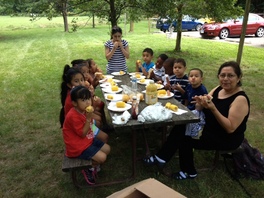Welcome!
For over 50 years, the SED Center has provided bilingual education programs for children ages 3 months to 4 years, their families, and adults in the Washington metropolitan area. We help build the knowledge, skills, and confidence necessary for our families to navigate an increasingly multilingual, multicultural society.
In accordance with the Federal Civil Rights Law, the Spanish Education Development (SED) Center does not discriminate on the basis of race, color, religion, national origin, sex, disability, age, marital status, family responsibilities, political affiliation, or sexual orientation.




